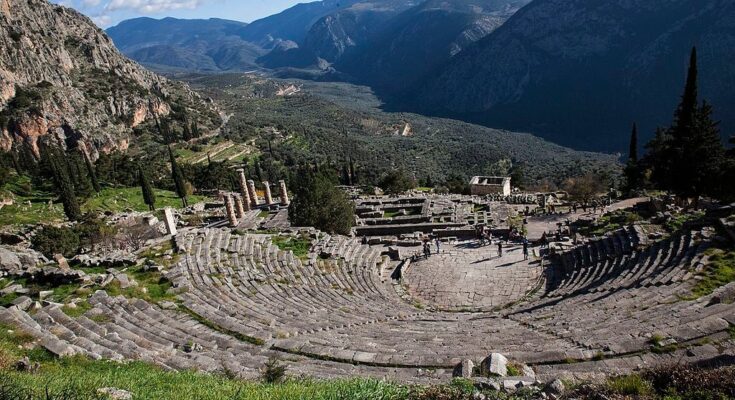Ancient Greek theaters used movable wooden stages some 2,000 years ago according to the findings of an architectural expert from Kumamoto University, Japan.
A group from the History of Western Architecture Laboratory of Kumamoto University who were conducting a field study at the ancient Greek theater at Messene discovered a large storage room and three stone rows beside the stage of the theater, a similar find to those at ancient Greek theaters in Megalopolis and one in Sparta.
At the other sites, it is believed that a wheel was placed in the space to create mobile wooden stages which existed in the ancient theaters of the Hellenistic period, leading researchers to the same conclusion for the Messene theater.
Theaters used wheels to move stages during the Hellenistic period
Associate Professor Ryuichi Yoshitake, who led the research project, said that the proskenion, used as a stage background and where actors were also able to speak from its balconies and skene, which was used as both a dressing room and another stage background, were separate constructions – each on their own set of wheels to make them mobile.
“In previous studies, there was a theory that the proskenion and skene were simultaneously moved along just three stone rows, but I think it is more logical that the proskenion and skene each had their own set of two stone rows to move along.
“I came to this conclusion due to the positions of three stone rows and the fact that it would have been quite difficult to move the heavy proskenion and skene together using a single axle with three wooden wheels,” Yoshitake explained.
More research is being conducted regarding the mobile wooden stages in order to better clarify the appearance of what the ancient stages would have looked like and the influence it had in future constructions.
The history of the ancient Greek theater of Messene
For more than 600 years, the ancient theater of Messene was an important center for not only drama but events in the political sphere as well. Great men of the past once strode its stage, including Philip V, the king of Macedonia, and the general of the Achaean League, Philopoemen from Megalopolis.
The theater was used for entertainment events and as a gathering place for political purposes. It was where Philip V, the king of Macedonia, and Aratus of Sicyon met in 214 BC, one day after the uprising of the people and the slaughter of the city’s officials and 200 wealthy citizens had taken place.
According to Livius, a great many citizens of Messene had gathered at the theater, demanding that general Philopoemen from Megalopolis would be brought before them there in plain sight, after being captured by the Messeneans in 183 BC.
After operating for six centuries, the theater was tragically abandoned. Characteristic of the apathy of the residents of the area regarding its fate, during the Byzantine era, local people removed many of the seats and used them as building material for temples and houses.
After 1,700 years of neglect, and the silencing of the many voices which had once resounded there, the ancient theater of Messene finally re-opened its doors for the public in the Summer of 2013.



